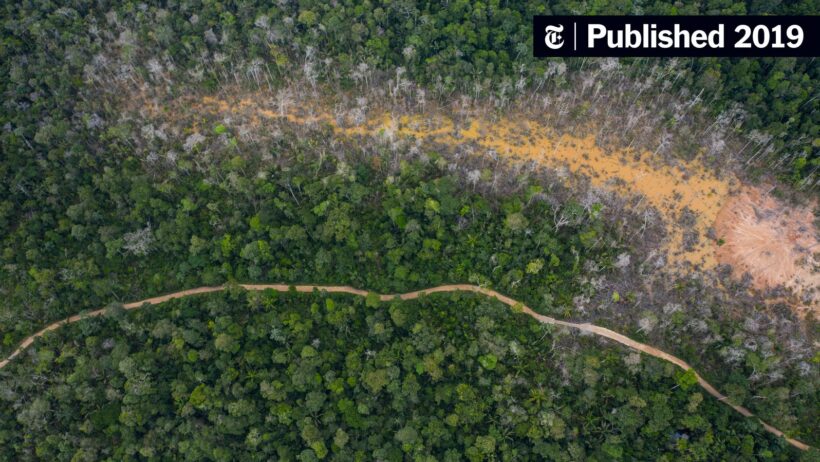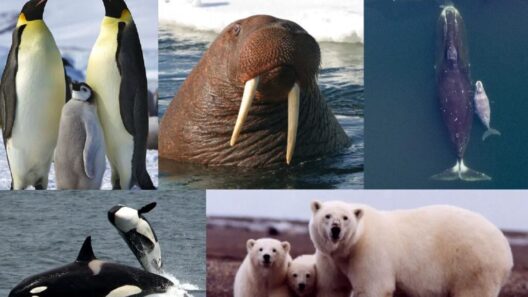Vegetation and forests have long been heralded as crucial components in the battle against climate change. As the planet endures the relentless onslaught of rising temperatures and extreme weather events, the role of flora in sequestering carbon dioxide and providing ecosystem services has come into sharper focus. This discourse delves into the intricate relationship between vegetation, forests, and climate change, elucidating how these natural entities function not only as carbon sinks but also as vital components of our global ecosystem.
At the outset, it is imperative to understand the mechanics of carbon sequestration. When trees and plants photosynthesize, they absorb carbon dioxide (CO2) from the atmosphere and convert it into organic matter. This process is intrinsic to their growth; larger trees store more carbon. Forests, therefore, act as extensive reservoirs of carbon, sequestering vast amounts of CO2 that would otherwise contribute to the greenhouse effect. Current statistics reveal that forests absorb approximately 2.6 billion tons of CO2 annually, a significant mitigation measure against climate change.
However, not all forests are created equal. The efficiency with which they sequester carbon can vary widely based on various factors such as forest type, age, and health. For instance, tropical rainforests, with their dense canopies and rich biodiversity, are considered some of the most effective at capturing CO2. Conversely, boreal forests, primarily composed of coniferous trees, also play a pivotal role, albeit under different climatic conditions. These forests store a substantial amount of carbon in their soil and biomass, functioning as critical buffers against climate fluctuations.
The complexity of forest ecosystems also extends to the concept of biodiversity. Diverse plant species contribute significantly to ecosystem resilience. A rich flora not only enhances carbon storage capacity but also provides habitats for myriad species, thereby supporting ecological balance. Monoculture plantations, in contrast, may yield economic benefits in the short term but often fall short in terms of resilience and carbon sequestration over the long haul. They are more susceptible to diseases and pests, thereby threatening carbon stores when extensive die-offs occur.
Add to this the role of vegetation in regulating the hydrological cycle. Trees facilitate water infiltration and transpiration, influencing local climates and reducing the risk of flooding. They prevent soil erosion, thus helping to maintain soil integrity and fertility. Moreover, vegetation acts as a natural coolant. As trees release water vapor during transpiration, they help to lower ambient temperatures. This cooling effect is particularly salient in urban areas, where the heat island effect exacerbates local temperatures, leading to increased energy consumption and stress on water resources.
Nevertheless, the alarming rates of deforestation pose a dire threat to these natural systems. Cutting down forests not only releases sequestered carbon back into the atmosphere but also diminishes the planet’s ability to absorb future emissions. This cycle perpetuates a vicious feedback loop that exacerbates climate change. It is estimated that deforestation accounts for approximately 10-15% of global greenhouse gas emissions, underscoring the critical need for forest conservation and restoration efforts.
In light of this, afforestation and reforestation emerge as actionable responses. Planting trees can significantly enhance carbon uptake, while restoring degraded forests allows ecosystems to recover their biodiversity and carbon storage capabilities. However, these initiatives must promote ecological integrity. Simply planting trees in non-native areas or monocultures could lead to unforeseen ecological consequences, undermining the intended benefits. Native species should be prioritized to ensure that newly established forests support local flora and fauna.
Furthermore, forest management practices must evolve to incorporate sustainability as a central tenet. This includes adopting agroforestry systems that integrate trees into agricultural landscapes, thereby enhancing both biodiversity and crop yields. Sustainable logging practices, such as selective logging and reduced impact logging, also play a crucial role in maintaining forest integrity while allowing for economic benefits.
In addition to conservation and management, the socio-economic dimensions of forests cannot be overlooked. Communities that depend on forest resources must be integrated into conservation strategies. Indigenous peoples, who possess ancient knowledge and traditional practices, often serve as stewards of forest ecosystems. Their involvement can enhance the legitimacy and success of conservation initiatives, as their lived experiences convey a profound understanding of local dynamics.
Public awareness and advocacy are indispensable elements in this dialogue. There is an urgent need to galvanize communities, policymakers, and corporations to recognize the multifaceted benefits of forests—not merely as resources for economic exploitation but as linchpins in climate resilience. Engaging the public through education campaigns can cultivate appreciation for local forests, enhancing community-led conservation efforts.
As the environmental landscape continues to experience change, the symbiosis between vegetation, forests, and climate change underscores the complex interdependencies that govern our ecosystems. In essence, forests represent a formidable ally in combatting climate change, necessitating a concerted effort to protect, restore, and sustainably manage these invaluable resources. In navigating this path forward, society must transcend traditional perceptions of forests to recognize their broader ecological significance and intrinsic value in the fight against global warming.






